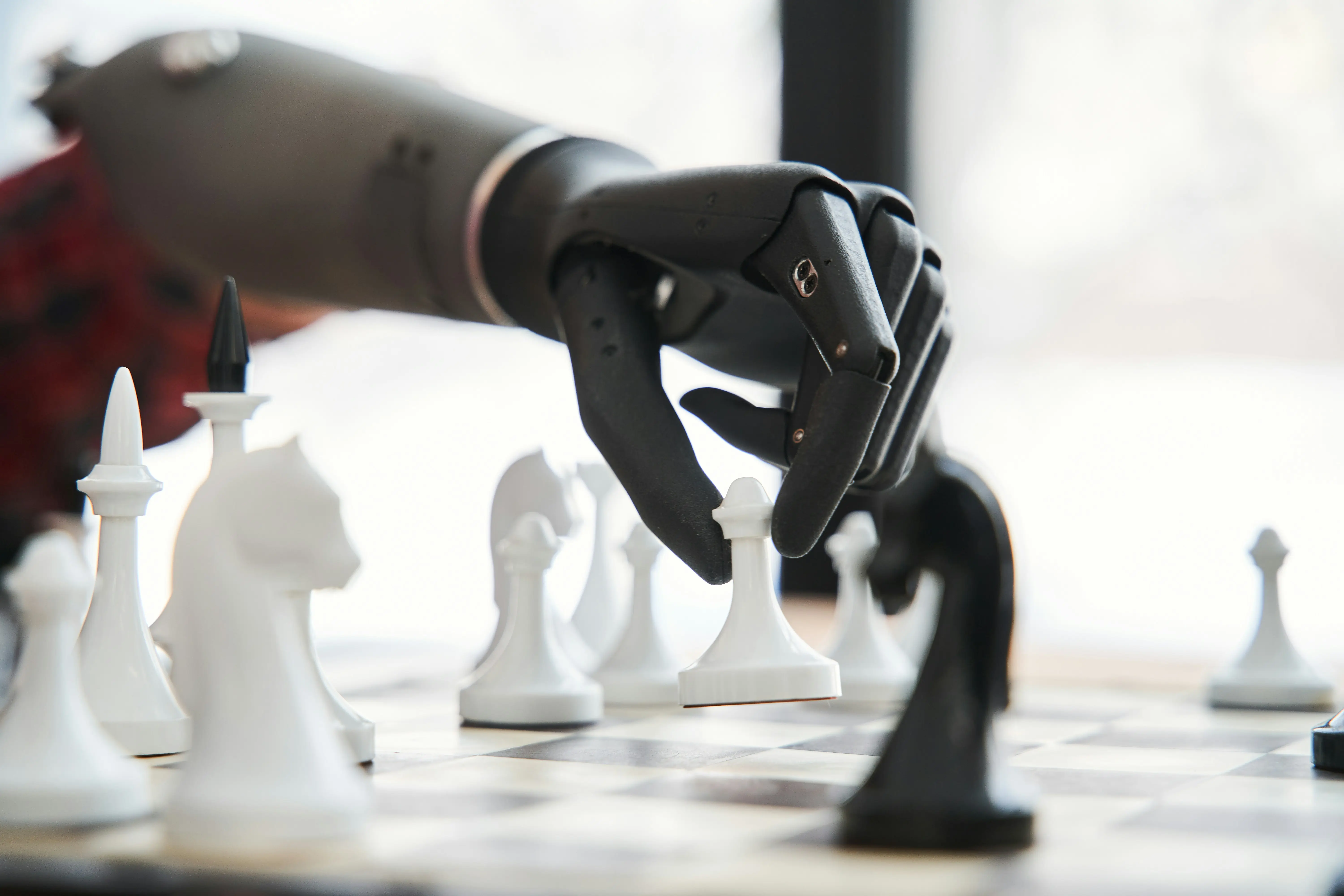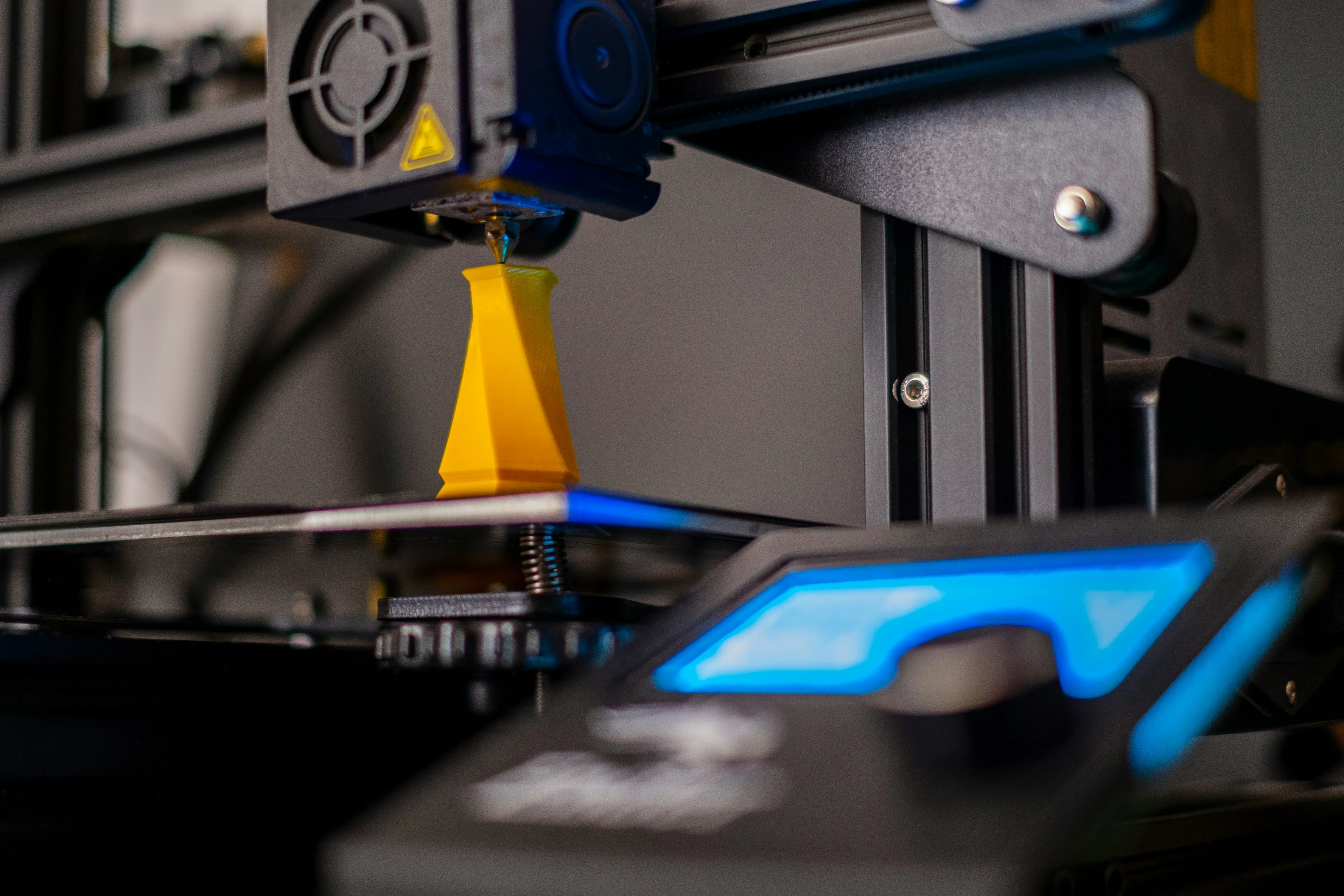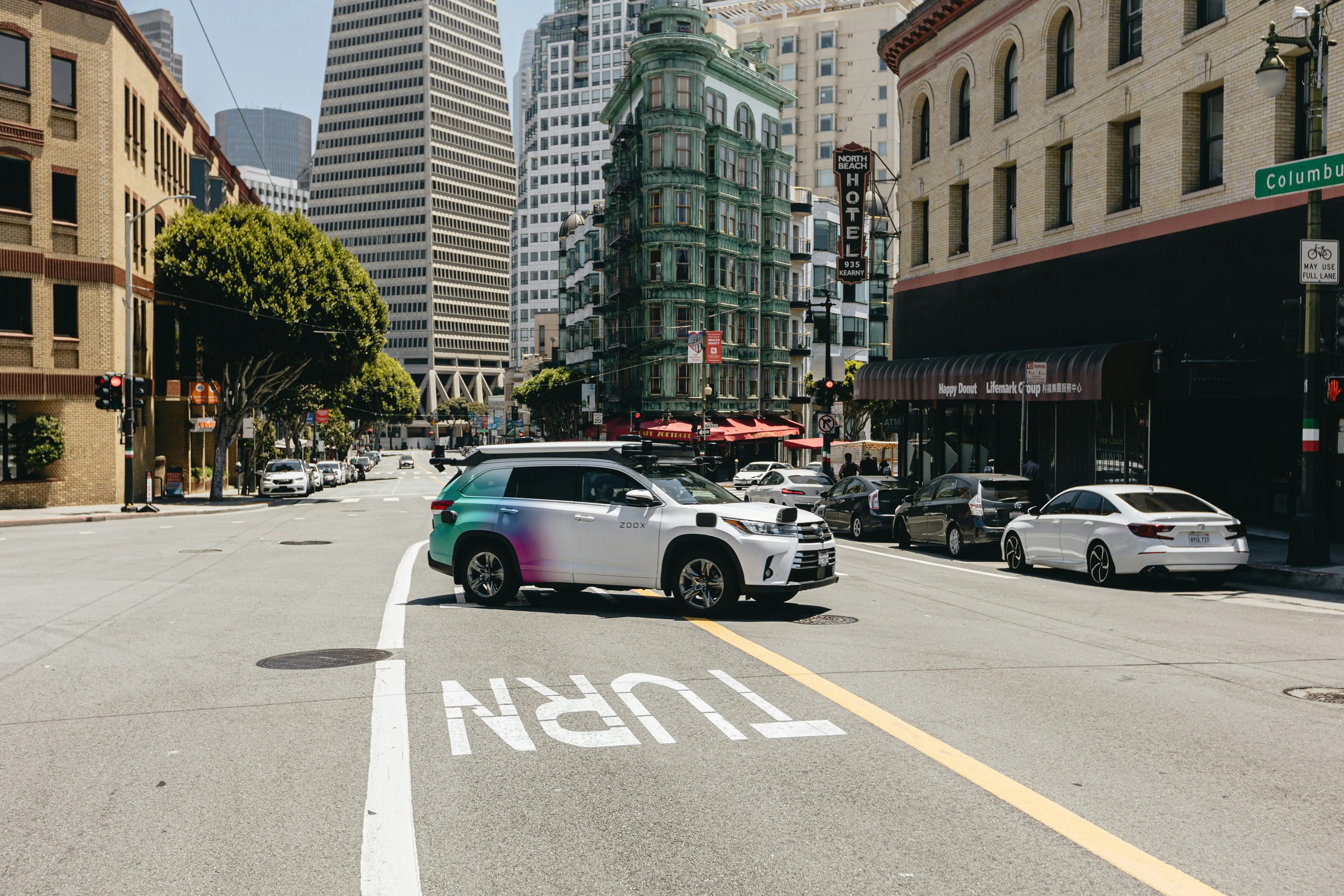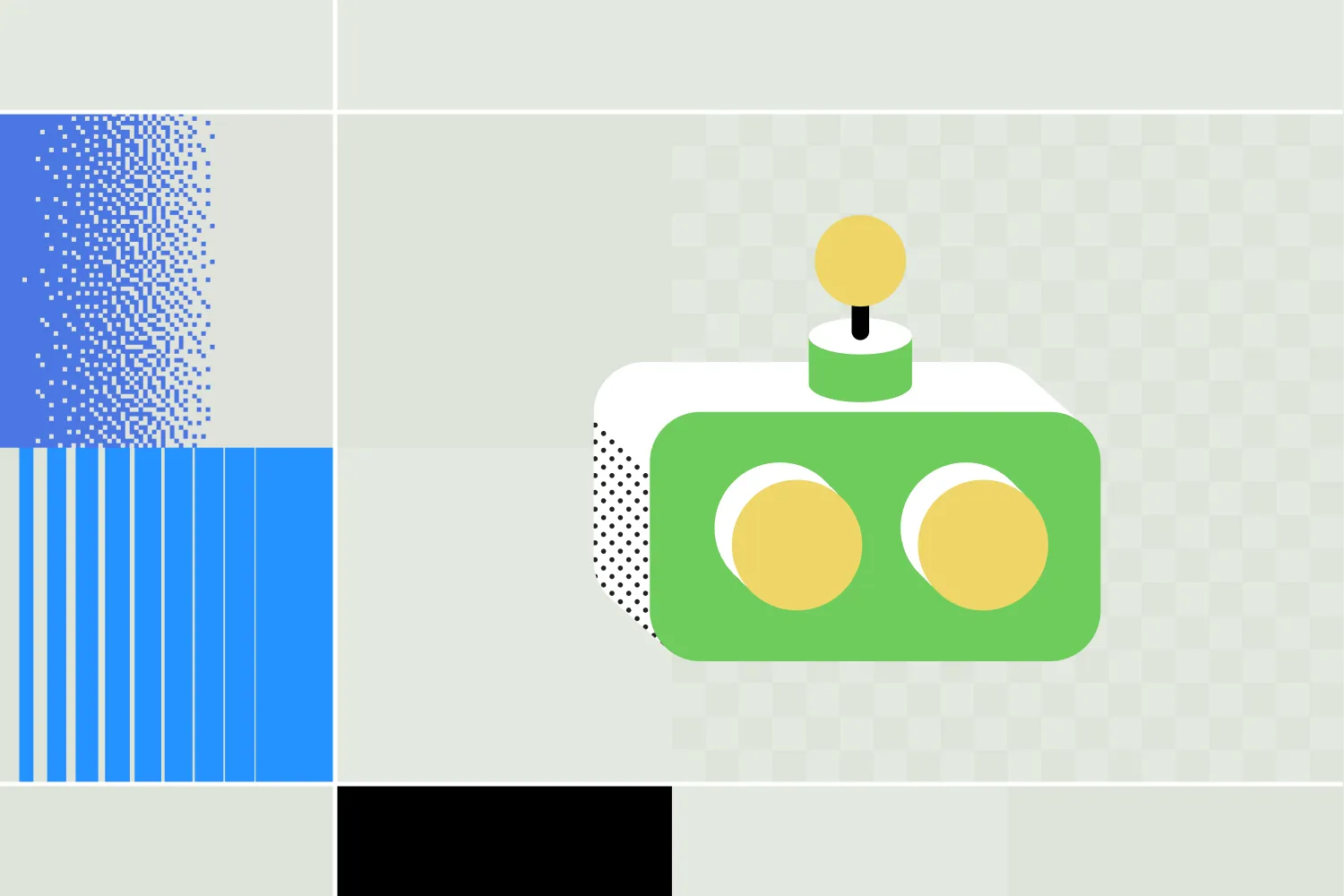- AI-agenten variëren van eenvoudige reflexsystemen die reageren op directe input tot geavanceerde agenten die plannen, leren en complexe taken coördineren in diverse domeinen.
- Eenvoudige reflexagenten reageren puur op de huidige omstandigheden, terwijl modelgebaseerde reflexagenten hun besluitvorming verbeteren met interne modellen om veranderingen in de omgeving bij te houden en te voorspellen.
- Multi-agent systemen bestaan uit meerdere AI-agenten die samenwerken of concurreren, waardoor geavanceerde toepassingen mogelijk zijn zoals zelfrijdende auto's die in het verkeer coördineren of het beheren van complexe toeleveringsketens.
AI-agenten zijn de afgelopen jaren sterk toegenomen. Door hun complexe technologie en mogelijkheden bestaan er tegenwoordig veel verschillende soorten AI-agenten.
Een AI-agent is software die taken uitvoert. In tegenstelling tot een standaard chatbot kan deze namens een gebruiker handelingen verrichten.
Er is een breed scala aan AI-agenten, van slimme thermometers en zelfrijdende auto's tot agenten met chatinterfaces. Al deze toepassingen vallen onder een van de zeven hoofdtypen AI-agenten. In dit artikel deel ik de 7 belangrijkste soorten AI-agenten en enkele praktijkvoorbeelden van AI-agenten.
1. Eenvoudige Reflexagenten
Een eenvoudige reflexagent is een AI-systeem dat beslissingen neemt op basis van alleen de huidige input uit zijn omgeving.
Hij gebruikt een set conditie-actie regels om waargenomen input te koppelen aan specifieke reacties. Wanneer hij een bepaalde toestand detecteert in de omgeving, voert hij de bijbehorende regel uit.
Hij heeft geen geheugen of intern model van de wereld — dus hij werkt alleen effectief in volledig observeerbare omgevingen waar elke beslissing puur op de huidige input kan worden gebaseerd.
Voorbeelden van Eenvoudige Reflexagenten
- Een thermostaat die de verwarming aanzet als het te koud is
- Een robot die draait wanneer hij tegen een muur botst (denk aan een Roomba met een kat erop)
- Een eenvoudige chatbot die “Hallo!” antwoordt wanneer een gebruiker “Hi” zegt
.webp)
2. Modelgebaseerde Reflexagenten
Een modelgebaseerde reflexagent is een AI-agent die beslissingen neemt op basis van zowel de huidige input als een intern model van de wereld.
In tegenstelling tot eenvoudige reflexagenten houdt dit type de toestand van de omgeving bij in de tijd. Hij gebruikt een model — opgeslagen informatie over hoe de wereld werkt — om ontbrekende informatie aan te vullen wanneer de omgeving niet volledig waarneembaar is.
Bij nieuwe input werkt hij zijn interne toestand bij, raadpleegt zijn conditie-actie regels en kiest de beste reactie op basis van zowel de huidige waarneming als eerdere ervaringen.
Voorbeelden van Modelgebaseerde Reflexagenten
- Een robotstofzuiger die de indeling van een kamer onthoudt en gebieden vermijdt die al zijn schoongemaakt
- Een LLM-agent die een gesprek voortzet en eerdere gebruikersinvoer bijhoudt
- Een game-AI die niet alleen reageert op wat hij ziet, maar ook op wat hij eerder in het spel heeft geleerd

3. Lerende Agenten
Een lerende agent is een AI-agent die zijn prestaties in de loop van de tijd verbetert door te leren van zijn ervaringen.
Hij bestaat uit vier hoofdcomponenten: een leercomponent, een prestatiecomponent, een beoordelaar en een probleemgenerator.
De prestatiecomponent kiest acties, terwijl de leercomponent het gedrag aanpast op basis van feedback. De beoordelaar evalueert de uitkomst van acties aan de hand van een vooraf bepaalde standaard, en de probleemgenerator stelt nieuwe acties voor om het leerproces te verbeteren.
Dankzij deze structuur kan de agent zich aanpassen aan veranderingen, strategieën verfijnen en effectief functioneren in onbekende omgevingen.
Voorbeelden van Lerende Agenten
- Een crypto AI-agent die handelsstrategieën aanpast op basis van marktprestaties
- Een aanbevelingssysteem dat steeds beter producten voorstelt op basis van gebruikersgedrag
- Een zorg-chatbot die leert van patiëntinteracties om de nauwkeurigheid van triage te verbeteren

4. Nutgebaseerde Agenten
Een nutgebaseerde agent is een AI-agent die acties kiest op basis van welke uitkomst naar verwachting de hoogste totale waarde of 'nut' oplevert.
In plaats van alleen een doel te bereiken, evalueert deze agent verschillende mogelijke uitkomsten en kiest hij degene die een vooraf bepaalde nutfunctie maximaliseert.
Hierdoor kan hij omgaan met situaties waarin er meerdere manieren zijn om een doel te bereiken of waarin afwegingen moeten worden gemaakt. Hij moet opties kunnen vergelijken, gevolgen voorspellen en uitkomsten rangschikken op basis van voorkeuren of prioriteiten.
Voorbeelden van Nutgebaseerde Agenten
- Een chatbot voor sales die leads prioriteert op basis van kans op conversie
- Een aandelenhandelsbot die risico en rendement afweegt om maximale langetermijnwinst te behalen
- Een zakelijke chatbot die vergaderingen plant om conflicten te minimaliseren en het gemak te maximaliseren
5. Hiërarchische Agenten
Een hiërarchische agent is een AI-agent die zijn besluitvormingsproces organiseert in meerdere lagen of niveaus, waarbij hogere niveaus abstracte doelen beheren en lagere niveaus specifieke acties aansturen.
Deze agent verdeelt complexe taken in kleinere subtaken, waarbij elk niveau van de hiërarchie verantwoordelijk is voor een ander beslissingsbereik.
Hogere lagen plannen bijvoorbeeld langetermijnstrategieën, terwijl lagere lagen directe sensordata en realtime reacties verwerken. De communicatie tussen de lagen zorgt ervoor dat brede doelstellingen en gedetailleerde uitvoering op elkaar worden afgestemd.
Deze structuur maakt het eenvoudiger om complexiteit te beheren en gedrag op verschillende tijdschalen of prioriteiten te schalen.
Voorbeelden van Hiërarchische Agenten
- In de productie plant een agent op hoog niveau het assemblageproces, terwijl lagere niveaus robotarmen en timing aansturen
- In een slimme fabriek beheren verschillende lagen de productieschema's, machinecoördinatie en fysieke operaties

6. Doelgerichte Agenten
Een doelgerichte agent is een AI-agent die beslissingen neemt door te beoordelen welke acties hem helpen een specifiek doel te bereiken.
De agent krijgt één of meer doelen — gewenste uitkomsten die hij wil behalen. Hij gebruikt zoek- of planningsalgoritmen om mogelijke actiesequenties te verkennen en kiest vervolgens de acties die het meest waarschijnlijk tot het doel leiden.
In tegenstelling tot reflexagenten reageert hij niet alleen — hij denkt na over toekomstige gevolgen voordat hij handelt. Hierdoor is hij flexibeler en beter inzetbaar in dynamische of onbekende omgevingen, maar het vraagt ook meer rekenkracht.
Voorbeelden van Doelgerichte Agenten
- Een navigatiesysteem dat de beste route naar een bestemming berekent
- Een puzzel-oplossende AI die zoekt naar zetten die tot een opgeloste puzzel leiden
- Een robotarm die een reeks bewegingen plant om een product succesvol te assembleren
7. Multi-Agent Systemen (MAS)
Last but not least: het multi-agent systeem.
Een multi-agent systeem (MAS) is een systeem dat bestaat uit meerdere AI-agenten die samenwerken (of soms concurreren) om individuele of gezamenlijke doelen te bereiken.
Elke agent in het systeem functioneert onafhankelijk, met eigen capaciteiten, doelen en waarneming van de omgeving.
Deze agenten communiceren en coördineren — direct via berichten of indirect door veranderingen in de omgeving te observeren. Het systeem als geheel kan problemen oplossen die te complex of verspreid zijn voor één enkele agent om aan te pakken.
Multi-agent systemen kunnen coöperatief, competitief of een combinatie van beide zijn, afhankelijk van het ontwerp en de doelen.
Voorbeelden van Multi-Agent Systemen
- Autonome voertuigen die op een kruispunt coördineren om botsingen te voorkomen
- Een groep financiële bots beheert facturatie, fraudedetectie en rapportage via AI-workflowautomatisering
- Een supply chain-systeem waarin verschillende agenten het voorraadbeheer, de verzending en de vraagvoorspelling beheren.

Bouw aangepaste AI-agenten
Het is niet moeilijk om een aangepaste AI-agent te bouwen – en je kunt het gratis doen.
Botpress biedt een visuele flow builder met drag-and-drop, beveiliging op ondernemingsniveau, een uitgebreide educatieve bibliotheek en een actieve Discord-community van meer dan 20.000 botbouwers.
Ons uitbreidbare platform betekent dat je elke aangepaste chatbot kunt bouwen met elke gewenste integratie — en onze Integration Hub staat vol met kant-en-klare connectors voor de grootste kanalen.
Begin vandaag nog met bouwen. Het is gratis.
Veelgestelde vragen
Wat zijn de 7 typen AI-agenten?
De 7 typen zijn: eenvoudige reflexagenten, modelgebaseerde reflexagenten, doelgerichte agenten, nut-gebaseerde agenten, lerende agenten, hiërarchische agenten en multi-agent systemen.
Is ChatGPT een AI-agent?
Ja, ChatGPT kan worden beschouwd als een AI-agent — het ontvangt input, verwerkt deze en genereert antwoorden, vaak op basis van een doel- of nutsgedreven aanpak, afhankelijk van de inzet.
Wat zijn intelligente agenten en hoe functioneren ze in digitale omgevingen?
Intelligente agenten zijn entiteiten die zijn ontworpen om te handelen in verschillende digitale omgevingen. Ze verzamelen kennis uit hun omgeving, beoordelen de huidige situatie en voeren acties uit om vooraf bepaalde doelen te bereiken. Hun prestaties worden beïnvloed door de externe acties die ze ondernemen binnen waarneembare omgevingen.
Welke rol speelt kunstmatige intelligentie in de werking van agenten?
Kunstmatige intelligentie geeft intelligente agenten het vermogen om te leren, redeneren en zich aan te passen. Agenten gebruiken AI om hun kennisbasis te vergroten, waardoor ze beter onderbouwde beslissingen kunnen nemen in verschillende omgevingen.
Waaruit bestaat de kennisbasis van intelligente agenten?
De kennis van intelligente agenten omvat informatie over de omgeving, vooraf gedefinieerde regels en een fundamenteel begrip van de huidige situatie. Deze kennis vormt de basis voor hun besluitvormingsprocessen.
Wat wordt bedoeld met het prestatie-element bij intelligente agenten?
Het prestatie-element van intelligente agenten verwijst naar hun vermogen om doelen te bereiken en beslissingen te nemen die hun acties optimaliseren in een bepaalde omgeving. Dit is een essentieel onderdeel dat de efficiëntie en effectiviteit van de agent bepaalt.
Kunnen agenten in hiërarchische structuren werken?
Ja, hiërarchische agenten zijn een type intelligente agent die werkt op gestructureerde niveaus. Hogere agenten houden zich bezig met algemene besluitvorming, terwijl lagere agenten specifieke taken uitvoeren binnen het grotere geheel. Deze hiërarchische structuur maakt efficiënte werking in complexe omgevingen mogelijk.
Werken intelligente agenten met beperkte intelligentie?
Ja, veel intelligente agenten werken met beperkte intelligentie, wat betekent dat ze een afgebakende kennis en mogelijkheden hebben. Deze beperking helpt hen zich te richten op specifieke taken en omgevingen waar hun expertise het meest relevant is.





.webp)

